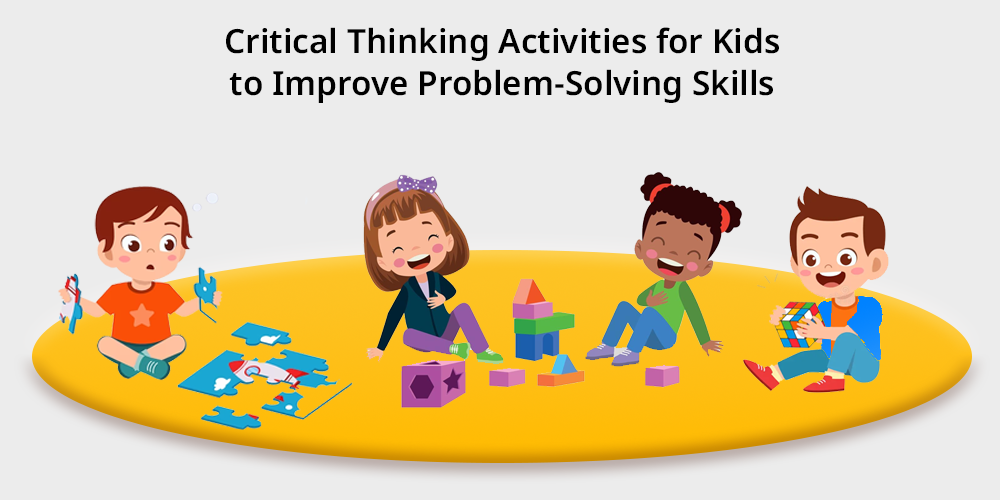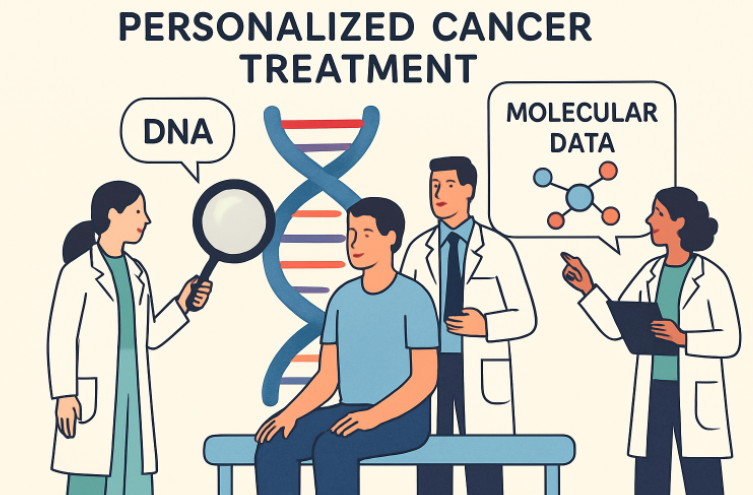HEALTH
Simple Habits for Lifelong Oral Health: Practical Tips Everyone Can Use

Why Simple Dental Habits Make a Difference
Oral health is often taken for granted—until problems arise. Yet, the basic routines built into your everyday schedule can make all the difference for teeth and gums. For example, brushing and flossing help prevent cavities, gum disease, and the embarrassment of chronic bad breath. However, the benefits extend much further: good oral hygiene has been shown to reduce the risks of heart disease, diabetes complications, and even pneumonia. Integrating these habits into daily life paves the way for a confident smile and, importantly, helps keep dental bills lower over the long haul.
For anyone seeking additional support or clear, actionable steps, accessible resources such as https://www1.deltadentalins.com/wellness.html break down practical dental care strategies into small, achievable actions. Consistency in these activities is key, as dental studies repeatedly show: individuals who keep steady routines are far less likely to suffer from serious dental issues than those who let habits slide.
Daily Routines to Protect Your Smile
There’s no overcomplicating oral hygiene—the best results come from sticking with core daily practices. Experts recommend brushing teeth at least twice per day, using a soft-bristled brush and fluoride toothpaste to clean every surface and along the gumline. Spending a full two minutes on brushing allows for proper plaque removal while lowering the risk of enamel erosion from overly aggressive scrubbing. Flossing every evening (or when most convenient) helps clear away food particles and bacteria that the toothbrush can’t reach, especially between tight teeth.
- Choose a toothbrush that fits your mouth comfortably and replace it every 3–4 months or after illness.
- When flossing, gently move the string back and forth, hugging the curve of each tooth rather than forcing it straight down, which could injure gums.
- Using an antimicrobial or fluoride mouthwash is a great way to add an extra level of defense, especially for those prone to cavities or gum disease.
Making these activities part of your morning and nighttime routines means they’ll soon become automatic. For hectic families, linking dental hygiene to other daily habits—such as brushing after breakfast and before bedtime—can help everyone remember and stay on track.
How Nutrition Shapes Oral Health
Diet plays a surprisingly large role in oral health outcomes. Tooth-friendly diets emphasize foods rich in vitamins A, C, and D, as well as calcium and phosphorus. They support the ongoing repair and maintenance of enamel and gum tissue. Fiber-rich fruits and vegetables, such as apples, celery, and carrots, can even stimulate saliva flow, which is natural protection against tooth decay. Saliva helps neutralize acid and washes away bits of food, which means that snacking on crisp, raw produce can give teeth a mini-cleaning during the day.
However, it’s just as important to watch out for the risks that come with frequent sugar consumption or acidic beverages like soda and fruit juices. Sugars fuel the bacteria that feed plaque, and recurring acid exposure erodes enamel, opening the door for cavities. The World Health Organization notes that limiting sugar intake can prevent the majority of dental caries—a simple change with far-reaching benefits. Even switching from frequent snacking to regular mealtimes lowers tooth decay rates.
Incorporating whole grains, lean meats, low-fat dairy, and plenty of water makes building good habits easier for busy families and individuals alike.
The Value of Regular Dental Checkups
Many dental problems develop gradually, without obvious symptoms initially. That’s why biannual checkups matter so much: dentists can identify small issues before they grow into larger, more uncomfortable, and expensive ones. Professional cleanings remove tartar and stubborn deposits that ordinary brushing and flossing leave behind. Dentists also screen for oral cancer, gum disease, worn fillings, and other threats to your health.
Regular appointments provide an opportunity to discuss preventive treatments, such as dental sealants for children, or receive tips to alleviate issues like sensitivity or dry mouth. If anxiety is holding you back from scheduling visits, remember: modern dental tools and gentle numbing options make most procedures swift and pain-free. Trusting your dental team and prioritizing recovery visits—based on their recommendations—safeguards your long-term oral health.
Mental Well-Being’s Impact on Your Mouth
People rarely connect their mental and emotional health to their oral hygiene, yet stress and anxiety are major risk factors for issues like teeth grinding (bruxism) and jaw clenching. These habits can chip or crack teeth, wear down enamel, and even lead to TMJ pain. Furthermore, mental fatigue or busy schedules might lead to cutting corners on brushing or skipping flossing entirely, increasing the risk of decay or gum infections. Stress may also drive unhealthy eating habits, favoring sugary or sticky comfort foods, which can compound the risk.
Being alert to signs such as a sore jaw in the morning, headaches, or unexplained tooth chips allows for early intervention. Techniques like mindfulness, regular exercise, and ensuring good sleep hygiene directly benefit both mental outlook and physical health—smile included. If necessary, don’t hesitate to ask a dentist about wearing a nighttime mouthguard or seek counseling for stress management.
Oral Care Across Different Ages
- Children: Establishing routines early can lead to a lifetime of good habits. Begin with a rice-sized smear of toothpaste as soon as teeth appear. Supervise all brushing and flossing until the child is 7 or 8 years old, and schedule their first dentist visit by their first birthday to help them become comfortable with dental care.
- Teens: Adolescents are at risk due to braces, sports injuries, and a diet that can include more sugary or acidic snacks. Please encourage them to care for their teeth as prescribed by their orthodontist and to wear mouthguards for contact sports.
- Adults: With increased independence often comes distraction. Whether it’s stress from work, family, or pregnancy, it’s easy to neglect oral care. Prioritize regular checkups, be mindful of warning signs, and keep your dentist informed about any changes in your health or medication.
- Seniors: As medication use rises, dry mouth becomes more common, which can lead to a higher risk of cavities. Clean dentures daily, manage medications carefully in consultation with your doctor, and address any pain or sores with your dental provider.
Community and Outreach Efforts
Improving oral health extends beyond personal responsibility; community programs and public health initiatives are essential for achieving broad, lasting change. Efforts like school-based sealant initiatives, affordable fluoride treatments, and free screenings have made a measurable difference, particularly for children and low-income families. The CDC reports that water fluoridation alone can reduce tooth decay in children by 25% over a lifetime.
Joining or supporting local oral health coalitions—whether by volunteering, attending educational workshops, or simply sharing resources—helps foster environments where good habits are easier for everyone. Communities working together reinforce positive behaviors for the greatest impact.
Adopt Small Changes for a Healthier Smile
Maintaining oral health requires steady effort, not perfection. By incorporating proven daily practices—consistent brushing and flossing, balanced nutrition, regular checkups, and awareness of mental well-being—everyone can enjoy fewer dental problems and stronger teeth at every age. And when you need credible advice or want to stay up-to-date on the latest preventive techniques, resources provide the most current guidance alongside actionable tips.
Encourage friends and family to adopt these easy habits, making a commitment not only to their smile but to the wellness of the wider community. Whether you’re just starting or reinvigorating your routine, the effort invested in small daily choices can truly deliver lifelong benefits.
HEALTH
Critical Thinking Exercises: 15 Way To Boost Your Brain Experience

Critical thinking is more than just a buzzword; it’s an essential skill that can transform the way you approach problems and make decisions. Whether you’re navigating your career, solving everyday dilemmas, or simply engaging in thoughtful conversations, honing your critical thinking skills can provide clarity and insight. But how do you sharpen this vital ability? Enter critical thinking exercises—simple yet powerful activities designed to challenge your mind and expand your cognitive capabilities.
Imagine being able to analyze situations from various angles, weigh evidence effectively, and draw reasoned conclusions with confidence. These exercises are not just for students or professionals; they’re for anyone who wants to enhance their intellectual toolkit. Ready to embark on a journey toward improved mental agility? Let’s explore the importance of critical thinking along with some engaging exercises that will help boost your brain experience!
Understanding the Importance of Critical Thinking
Critical thinking is the backbone of effective decision-making. It empowers individuals to dissect information, explore different perspectives, and uncover hidden biases. This skill is crucial in an era overflowing with data, where misinformation can easily cloud judgment.
When you engage in critical thinking, you enhance your ability to evaluate arguments logically. You learn to ask probing questions that lead to deeper insights and better understanding. Rather than simply accepting information at face value, critical thinkers challenge assumptions—both their own and those of others.
Moreover, strong critical thinking skills foster creativity and innovation. They encourage out-of-the-box solutions by allowing your mind to explore uncharted territories without fear of failure or ridicule.
In both personal and professional contexts, this mindset cultivates adaptability—an essential trait in our rapidly changing world. As situations evolve swiftly, being able to think critically ensures you’re prepared for whatever comes next.
Benefits of Regularly Engaging in Critical Thinking Exercises
Regularly engaging in critical thinking exercises sharpens your analytical skills. You become more adept at evaluating information and making informed decisions. This skill is essential in today’s fast-paced world.
Improved problem-solving abilities are another significant benefit. As you practice, you learn to approach complex issues with a clear mind. This leads to innovative solutions that might not have been obvious initially.
Moreover, critical thinking enhances creativity. It encourages you to explore various perspectives before arriving at conclusions. By actively questioning assumptions, your thought processes become richer and more diverse.
Additionally, these exercises can boost confidence in decision-making capabilities. When you’re equipped with the tools of critical thinking, facing challenges becomes less daunting.
Regular practice promotes lifelong learning. You cultivate an insatiable curiosity that drives exploration beyond comfort zones, enriching both personal and professional life experiences.
15 Ways to Boost Your Brain Experience Through Critical Thinking
Engaging in critical thinking exercises can transform your mental landscape. Here are 15 effective ways to elevate your brain experience.
Start with puzzles and riddles. They challenge you to think outside the box while sharpening problem-solving skills.
Journaling is another great tool. Reflecting on daily experiences encourages deeper analysis of thoughts and emotions.
Reading diverse materials broadens perspectives. It exposes you to new ideas, prompting critical evaluation.
Group discussions stimulate debate, forcing you to articulate and defend your viewpoints clearly.
Mind mapping helps visualize relationships between concepts, enhancing cognitive organization.
Explore case studies relevant to your interests; they provide practical applications of theory in real-world contexts.
Teach someone else what you’ve learned; it reinforces knowledge through explanation and questioning.
Experiment with role-playing scenarios that require quick thinking under pressure for a dynamic approach to problem-solving.
These activities not only enhance reasoning abilities but also make learning enjoyable!
Examples of Real-Life Situations Where Critical Thinking Can Be Applied
Critical thinking plays a vital role in everyday life. Imagine having to make a quick decision during a family emergency. Assessing the situation, evaluating options, and choosing the best course of action can save lives.
In the workplace, critical thinking is essential for problem-solving. A team facing project challenges must analyze data, consider different perspectives, and devise effective solutions to keep things on track.
Even in personal finances, critical thinking comes into play. When budgeting or investing money, weighing pros and cons helps individuals make informed choices that align with their goals.
Social situations also benefit from this skill. Engaging in discussions about controversial topics requires analyzing arguments critically while remaining open-minded to differing opinions.
From daily decisions to major life changes, applying critical thinking leads to better outcomes across various scenarios. It empowers individuals to navigate complexities with confidence and clarity—all without losing sight of their values and priorities.
The Role of Emotions in Critical Thinking and How to Manage Them
Emotions play a significant role in our critical thinking processes. They can either enhance or hinder our ability to analyze situations objectively. When we feel strong emotions, such as anger or fear, they may cloud our judgment and lead us to make impulsive decisions.
Recognizing your emotional state is the first step towards better critical thinking. By acknowledging how you feel about a situation, you create space for reflection rather than reaction. This self-awareness allows for clearer analysis of facts and arguments.
Practicing mindfulness techniques can help manage overwhelming emotions. Breathing exercises or short meditation sessions provide time to regroup before diving into decision-making tasks.
Additionally, seeking feedback from others can offer valuable perspectives that balance out personal feelings. Engaging in discussions with people who hold different viewpoints encourages a more rounded approach to problem-solving and reduces emotional bias.
Tips for Overcoming Common Challenges in Developing Critical Thinking Skills
Developing critical thinking skills can come with its own set of challenges. One common hurdle is the fear of being wrong. Embrace mistakes as learning opportunities instead of setbacks. This mindset shift allows for growth and deeper understanding.
Another challenge is the overwhelming amount of information available today. To combat this, focus on quality over quantity. Seek out reputable sources and take notes to distill complex ideas into manageable concepts.
Distractions also play a significant role in hindering your thought processes. Create a dedicated workspace that fosters concentration, free from interruptions.
Practice self-reflection regularly. Ask yourself questions about your decision-making process to identify any biases or assumptions that could cloud judgment. This habitual inquiry sharpens your analytical abilities over time while enhancing clarity in reasoning.
Committing to Regular Practice for a Sharper Mind
Building a sharper mind requires dedication. Regular practice is essential for honing critical thinking skills.
Think of it as exercising your brain. Just like physical workouts, mental exercises need consistency to yield results. Set aside time each day or week specifically for these activities.
Engage with puzzles, debates, or thought-provoking readings. Each challenge enhances your cognitive abilities and encourages deeper analysis.
Track your progress over time. You may notice improvements in decision-making and problem-solving skills that ripple into daily life.
Incorporate diverse activities to prevent boredom and stimulate different areas of the brain. Variety keeps the mind engaged and eager to learn more.
Make it enjoyable! Find exercises that intrigue you, sparking curiosity rather than feeling like a chore. This approach fosters a lifelong habit that enriches both personal and professional growth.
Concluion
Critical thinking exercises are essential for enhancing your mental agility and decision-making abilities. By incorporating these practices into your daily routine, you can not only sharpen your mind but also enrich the way you approach various challenges in life.
Understanding their importance helps lay a solid foundation for personal growth, while the benefits of engaging regularly lead to improved problem-solving skills and better emotional regulation.
Exploring different techniques to boost brain experience through critical thinking is both stimulating and rewarding. Applying these exercises in real-life situations demonstrates their practical use, showing how they can positively impact everyday decisions.
Emotions play a significant role here too; managing them allows for clearer judgment when analyzing situations critically. Overcoming common hurdles on the path to developing these skills is possible with perseverance and commitment.
By making critical thinking exercises a regular part of your life, you’ll find yourself more equipped to tackle problems head-on while enjoying an enriched cognitive experience that continually evolves over time. Embrace this journey toward sharper reasoning today!
HEALTH
Do you have low testosterone levels? What to look out for

Have you been feeling off lately? Not like yourself? Maybe it’s the constant fatigue that won’t go away, or perhaps the sudden change of moods that you have no explanation for. It’s easy to chalk these occurrences up to stress, age, or just a bad day, but something more problematic may be behind it.
Testosterone is responsible for many aspects of our health, from muscle mass and bone density to sex drive and mood regulation. But when its levels drop below the normal range, the effects can be felt on your entire life. The question is: what do these effects actually look like, and when should you seek help for low T-levels? Let’s go through all the probable symptoms of low testosterone and discuss how you can recover from this issue.
What are the physical symptoms of low testosterone?
Reduced sex drive and sexual function
The first and most prominent red flag of low testosterone always comes from your sex drive. You may notice your libido declining, or worse, erectile problems. These issues tend to creep on you gradually, but when your T-levels drop considerably, they’ll become a little too challenging to ignore.
Fatigue and low energy
A low testosterone level in the body brings with it a kind of tiredness that refuses to go away. It’s a persistent sort of exhaustion that makes even simple tasks feel monumental, and no amount of rest can resolve the issue. Low testosterone tends to sap your energy reserves in a way that’s distinctly different from regular tiredness. When it happens, you’ll likely find yourself needing an afternoon nap all the time and struggling to make it through work without feeling completely drained.
Decrease in muscle and body changes
When testosterone falls, so does your ability to build and maintain muscle mass. If you hit the gym quite regularly, this might be the first thing you notice. You may find your strength decreasing during workouts, your recovery taking longer, and your muscles shrinking despite maintaining your routine. Not only will it feel as though the workouts you could easily do in the past are now barely manageable, but the results you desire just aren’t there, no matter how hard you try.
Thinning or slowing hair growth
While high T-levels are linked to hair loss, low T-levels are actually connected to slow hair growth rate instead. For instance, you may notice that your facial hair is growing more slowly, and you don’t need to shave as frequently as before. In a similar vein, your body hair may thin out as well, though this may be harder to notice initially. Both of these problems could be signs that your testosterone levels are dropping.
Weight gain and fat accumulation around the abdomen
If you’ve recently been struggling to lose some of that struggling belly fat, the good news is that it may not be entirely down to your diet. The bad news is that it is likely caused by low levels of testosterone. Not only that, but you may now notice that your weight is going up more easily than it used to, even when you’re doing everything by the book.
Bone and joint pain
Testosterone plays a big role in maintaining bone density and joint health. So when its levels drop, you’ll notice an increased number of aches and pains throughout the body, especially in your joints. This symptom often gets attributed to ageing or overdoing it at the gym, but in reality, it may be a sign of hormonal imbalance instead.
Increased sweating
Night sweats and unexpected hot flushes aren’t just a woman’s health issue, as some may think. Men with low testosterone can also experience increased sweating and hot flushes, especially at night. You might wake up drenched despite your bedroom being at a comfortable temperature, or find yourself sweating more profusely during the day without any obvious triggers.
What are the mental and emotional signs of low testosterone?
Mood changes
Irritability, feeling low, or experiencing mood swings that seem to come from nowhere are all issues that tend to stem from low testosterone. You may find yourself snapping at loved ones over the smallest of annoyances, or feel a persistent sense of sadness that doesn’t match your circumstances. These changes can cause a significant strain on your relationships and affect your overall quality of life.
Trouble concentrating
With lower levels of testosterone, our sense of focus often feels blunted, and our minds struggle to engage with even simple and straightforward tasks. This is because low T-levels affect our cognitive function, and hormonal imbalance can cause issues in the workings of the nerve cells.
Memory issues
If you ever find yourself forgetting why you’re walking into a room or struggle to recall details that should come easily, testosterone may be to blame here. You might notice problems with both short-term memory and long-term recall. While facing a bit of forgetfulness now and then is normal, persistent memory issues warrant a serious investigation.
Brain fog
Brain fog is a cloudy, unclear mental state where thinking feels excessively effortful and sluggish. Instead of facing difficulty focusing on one task, you’ll feel more like your brain is operating in a type of low-battery mode. You may struggle to find the right words in conversation or feel like your mental processing speed has slowed down significantly. Many men describe feeling dull or like they’re not firing on all cylinders when experiencing brain fog, and the likeliest culprit for this, too, is lower testosterone.
Lack of drive
Beyond everything discussed so far, the worst part of experiencing low testosterone is how it saps away our motivation and ambition completely. Our hobbies no longer feel fun, there is little enthusiasm to achieve our work goals, and our social batteries feel forever drained. The get-up-and-go approach that may have once defined your active lifestyle may vanish, making you feel like a husk of your former self.
When should you seek professional help for low testosterone?
If you recognize yourself in any of the symptoms discussed above, don’t worry. This will never be the new normal for you, as low testosterone is a proper medical condition with a ton of effective treatment options.
So how do you go about seeking help? Your first step will be to undergo a thorough diagnosis by a qualified healthcare provider who can assess both your testosterone levels and how they may be affecting your life. Once diagnosed, you can try treatments like testosterone replacement therapy (TRT), which can be life-changing for men whose lives are being torn apart due to this issue. If you’re in the London area and suspect you might be dealing with Low T, seeking expertise from a specialist TRT clinic in London can provide you with a comprehensive assessment and a personalized treatment option tailored to your needs.
When you do decide to take this step, don’t forget that this treatment will work best with a healthy lifestyle. Good nutrition, regular exercise, quality sleep, and stress management will all help you turn your life around. Just be ready to put in the effort as required. Once you do so, you will undoubtedly feel like yourself again.
HEALTH
Advancements in Personalized Cancer Treatments: A New Era in Oncology

The landscape of oncology is experiencing a remarkable transformation as personalized cancer treatments become increasingly central to patient care. Rather than relying on generalized therapies, today’s oncologists seek to tailor medical interventions based on each patient’s unique genetic, molecular, and environmental factors. This shift not only offers improved efficacy but also minimizes the unwanted side effects commonly associated with traditional approaches.
In many cases, these advancements are supported by ongoing research initiatives, including SCLC clinical trials that explore cutting-edge therapies for small cell lung cancer. Personalized treatments are promising for improving disease control, increasing survival rates, and enabling the treatment of cancers previously deemed untreatable. As hospitals and research centers adopt these methods, they leverage detailed patient data to inform highly targeted plans of care. By focusing on the specific mutations driving a tumor’s growth, physicians can match each patient with the most promising therapies, pushing the boundaries of what was previously thought possible in cancer recovery.
Understanding Personalized Cancer Treatments
Personalized cancer treatments rely on analyzing a patient’s genetic blueprint and the specific characteristics of their tumor. This individualized approach entails not only identifying the type of cancer but also recognizing the unique drivers behind each case. For example, what causes one patient’s cancer to grow aggressively may be absent in another patient’s cells, even if both have the same cancer type. Oncologists combine this in-depth knowledge with clinical findings to tailor treatment protocols, which frequently leads to better outcomes.
Steady advances in genetic sequencing technology and molecular biology enable the move to personalize care. Physicians can now quickly sequence a tumor’s DNA or RNA and compare these patterns with large databases of existing cases, uncovering targetable mutations or defects. With this information, the traditional trial-and-error style of treating cancer is replaced by a more rational and precise process, saving precious time for patients with aggressive or resistant diseases.
Genetic Profiling and Targeted Therapies
Genetic profiling is a driving force behind the modern evolution of cancer treatment. By examining a tumor’s genome, clinicians can map which genes are mutated or abnormally expressed and, in turn, create profiles that guide therapy decisions. Advances in next-generation sequencing (NGS) have made this process faster, cheaper, and more reliable, allowing for rapid identification of actionable targets.
With profiling results in hand, oncologists may select from a growing list of targeted therapies: precision drugs that attack specific proteins or signaling pathways within cancer cells. For instance, breast cancers with HER2 overexpression are commonly treated with drugs like trastuzumab, while lung cancers harboring EGFR mutations can be managed with tyrosine kinase inhibitors. These medicines interrupt cancer cell growth and survival mechanisms with minimal impact on healthy tissue, a major improvement over conventional chemotherapy.
Immunotherapy and Its Personalization
Immunotherapy has shifted the narrative of cancer treatment by leveraging a patient’s own immune system to hunt down and eliminate malignancies. This approach encompasses a variety of strategies, from immune checkpoint inhibitors that remove the ‘brakes’ on immune cells to engineered therapies like chimeric antigen receptor (CAR) T-cell treatments. Personalized immunotherapies are designed by adapting immune cells to recognize unique cancer-associated antigens specific to each patient.
Remarkably, recent breakthroughs show that even solid tumors long thought to be resistant to immune-based intervention can be targeted with custom therapies. Case studies and early trial results suggest that with continued refinement, immunotherapy could be safely and effectively tailored for many cancers. Emerging strategies, such as patient-specific neoantigen vaccines, continue to expand the possibilities in this domain.
Role of Artificial Intelligence in Personalized Oncology
Artificial intelligence (AI) is ushering in a new age of data-driven oncology. As genomic, imaging, and clinical information grow exponentially, AI algorithms play a central role in analyzing this data, helping to identify subtle patterns and treatment opportunities that might be overlooked by clinicians. Machine learning models have shown promise in predicting individual patient responses to various treatments, which supports more customized and effective regimens.
Researchers have also harnessed AI to create patient-specific gene interaction networks rapidly, pinpointing new cancer subtypes and supporting comprehensive precision-medicine strategies. These technologies enable not just faster data analysis but also real-time adaptation of patient care as new information emerges.
Challenges and Ethical Considerations
Despite the promise, barriers to widespread adoption of personalized treatments persist. The cost of next-generation sequencing and targeted drugs can be prohibitive for many patients, while disparities in access to care magnify existing health inequities. Ensuring that all patients benefit from breakthroughs remains a significant challenge.
Moreover, ethical dilemmas around the use of sensitive genetic information demand careful handling. Issues such as informed consent, data privacy, and the long-term storage of genetic data require strict oversight and ongoing dialogue among clinicians, researchers, patients, and policymakers.
Future Prospects in Personalized Cancer Care
The path forward is bright but will require collaborative innovation and policy reform. Ongoing research is refining personalized vaccines, such as mRNA-based immunizations tailored to the unique markers of each patient’s cancer. Efforts to speed manufacturing and increase the scalability of personalized drugs are also underway, which could drastically reduce wait times and expand availability.
Public-private partnerships and continued investment in data infrastructure are crucial to realizing the promise of personalized oncology for all patients, regardless of geography or socioeconomic status.
Conclusion
Personalized cancer treatments represent a paradigm shift in oncology, offering greater hope and better outcomes for patients everywhere. By harnessing innovations in genetic profiling, targeted therapies, immunotherapy, and artificial intelligence, the medical field is making significant strides toward more precise, personalized, and effective cancer care. Continued commitment to research, access, and ethical oversight will ensure that these advances benefit the broadest possible range of patients in the years to come.
-

 Entertainment6 months ago
Entertainment6 months agoSflix: How It’s Changing the Way We Watch Movies and TV Shows
-

 Blog4 months ago
Blog4 months agohanime1: The Ultimate Destination for Anime Lovers
-

 Technology7 months ago
Technology7 months agoSimpcitt: The Rise of a Unique Online Community
-

 Entertainment5 months ago
Entertainment5 months agoCrackstreams 2.0: The Future of Free Sports Streaming?
-

 Bills7 months ago
Bills7 months agoWhy Does My Instagram Reel Stop Getting Views After One Hour? How to Fix It?
-

 80s7 months ago
80s7 months agoFavorite 100 Songs of the 80s: (#1) Michael Jackson – Billie Jean
-

 Technology7 months ago
Technology7 months agoAnon Vault: Protecting Your Digital Footprint
-

 Blog7 months ago
Blog7 months agoSimpcitu: The New Age Trend Shaping Online Interactions
